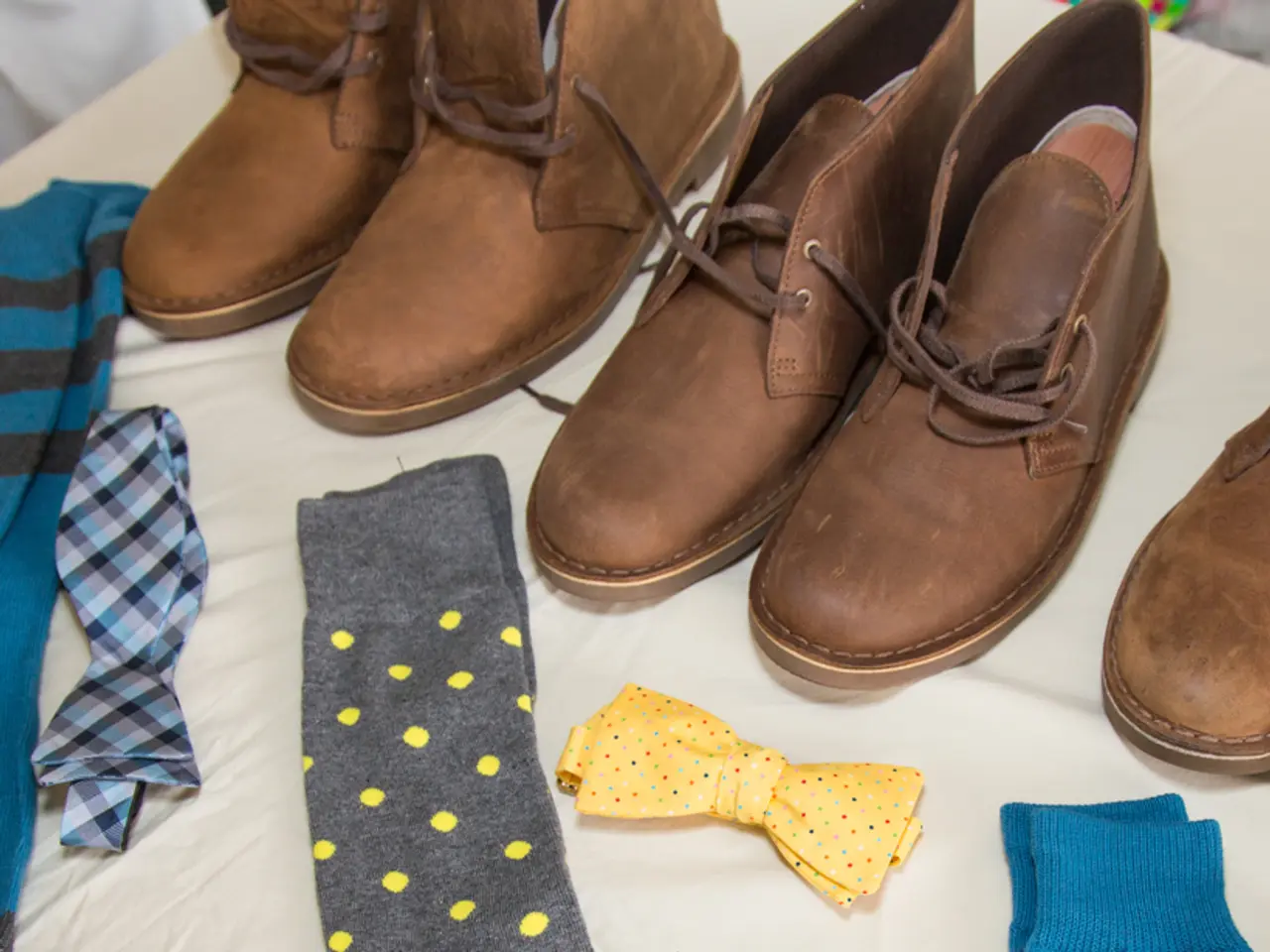Gathering and Stitching Together
In the ever-evolving world of fashion, clothing is no longer just a means to cover one's body. It serves as a tool to break free from the past, transcend social barriers, and find a sense of belonging [1]. However, the fashion industry, responsible for more CO2 emissions annually than all international flights [2], faces significant challenges.
Leading brands are rising to the occasion, implementing strategies to reduce carbon emissions and promote sustainability. Nike, for instance, has set science-based carbon reduction targets, aiming for a 65% reduction in its own operations and a 30% reduction across its supply chain by 2030 [2]. By FY24, Nike achieved a 29% decline in Scope 3 emissions since 2020 [2].
Apparel Impact Institute supports suppliers' transition to renewable energy through the Fashion Climate Fund, subsidizing projects to reduce Scope 3 emissions in complex supply networks [1]. Brands like SHEIN focus on waste-less innovation, sourcing sustainable materials, and promoting circular textile supply chains with aims for full circularity by 2050 [3].
Denim manufacturer Artistic Milliners invested $100 million in renewable energy solutions to reduce emissions tied to production processes [1]. Companies like Patagonia and Levi's have pioneered closed-loop water systems to reduce water consumption and harmful discharges, while digital printing technologies minimize fabric waste and water use [4].
Efforts to minimize air freight and increase sustainable fuel use form part of logistics strategies to cut carbon footprints [2]. Industry collaboration and innovation hubs, such as SHEIN’s Centre of Innovation for Garment Manufacturing, improve supplier productivity and sustainability practices [3].
While challenges persist, including rising polyester use driven by low oil prices and difficulties in supplier decarbonization, leading companies are making measurable progress through integrated approaches addressing energy use, materials, waste, and supply chain management [1][2][3][4].
Sustainable fashion should not just be about reducing environmental impact, but also about providing creativity, beauty, and social mobility to the populations that need it the most [5]. Initiatives like Custom Collaborative, a Harlem-based nonprofit, help low-income and immigrant women learn sustainable fashion design and start their own businesses [6].
In Philadelphia, Mary Alice Duff is building a clothing brand that provides living-wage jobs and uses sustainable materials, catering to those ignored by mainstream fashion [7]. Ngozi Okaro, executive director of Custom Collaborative, believes that worker cooperatives can thrive with proper support and are "imminently scalable" [8].
Meanwhile, the Lowest Wage Challenge, launched by ABLE and Nisolo, calls for major fashion companies to publicly list the hourly wages of their lowest-paid garment workers [9]. In Indonesia, deforestation by the viscose rayon and palm oil industries are causing massive wildfires [10].
Political candidates should focus on creating jobs and wealth in low-income communities, and small businesses need easier access to low-interest loans and grant money, according to Mary Alice Duff [11]. If food and clothes were fairly priced, offered well-paying jobs, and were controlled democratically, they could revolutionize our society [12].
In conclusion, the fashion industry is taking significant strides towards a greener and more equitable future. However, there is still much work to be done, from addressing the wages of garment workers to reducing pollution caused by the industry. The future of fashion lies in collaboration, innovation, and a commitment to social and environmental responsibility.
References: [1] Apparel Impact Institute. (2021). The Fashion Climate Fund. Retrieved from https://apparelimpact.org/our-work/the-fashion-climate-fund/
[2] Nike. (2020). Climate Strategy. Retrieved from https://www.nike.com/node/climate-strategy
[3] SHEIN. (2021). Sustainability Report. Retrieved from https://www.shein.com/sustainability/report/2021
[4] Patagonia. (2021). Environmental Initiatives. Retrieved from https://www.patagonia.com/environment/
[5] Okaro, N. (2021). The Future of Fashion. TED Talk.
[6] Custom Collaborative. (2021). About Us. Retrieved from https://www.customcollaborative.org/about
[7] Duff, M. A. (2021). Mary Alice Duff. Retrieved from https://maryaliceduff.com/
[8] Okaro, N. (2021). The Future of Fashion. TED Talk.
[9] ABLE. (2020). Lowest Wage Challenge. Retrieved from https://www.abletowork.org/lowest-wage-challenge/
[10] Greenpeace. (2021). Indonesia. Retrieved from https://www.greenpeace.org/indonesia/
[11] Duff, M. A. (2021). Mary Alice Duff. Retrieved from https://maryaliceduff.com/
[12] Okaro, N. (2021). The Future of Fashion. TED Talk.
- Activists within the fashion-and-beauty sector are pushing for ethical fashion, advocating for sustainability, social justice, and environmental-science in the industry.
- Nonprofit organizations like Custom Collaborative provide education-and-self-development opportunities, teaching sustainable fashion design and encouraging personal-growth for low-income and immigrant communities.
- Striving for sustainability, brands like Nike, Patagonia, and Levi's are implementing strategies to reduce carbon emissions, improve supply chain management, and promote closed-loop water systems.
- As part of their sustainability initiatives, companies are investing in renewable energy, such as Artistic Milliners' $100 million investment in renewable energy solutions.
- In the realm of lifestyle, individuals are prioritizing the natural world and embracing a sustainable fashion ethos, seeking creativity, beauty, and social mobility through eco-friendly fashion choices.
- Industry collaboration is essential, with brands and innovators joining forces to form hubs like SHEIN's Centre of Innovation for Garment Manufacturing, ultimately improving supplier productivity and sustainability practices.
- Recognizing the importance of science and climate-change in addressing the environmental impact of the fashion industry, leading companies are establishing science-based carbon reduction targets and launching initiatives like the Fashion Climate Fund.
- Addressing greater systemic issues within the fashion-and-beauty industry, political candidates should focus on creating jobs and wealth in low-income communities, while ensuring fair pricing and democracy for essential goods like food and clothing.




